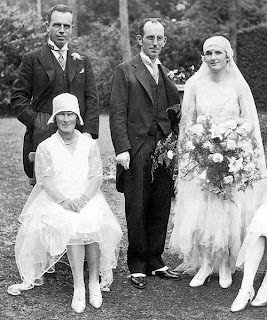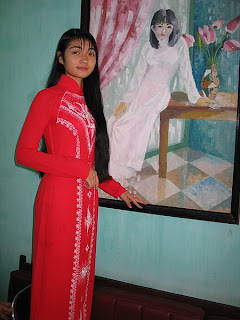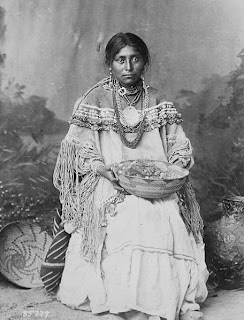A wedding the dress or a
wedding gown is the clothing of a bride during a
wedding the dress ceremony used. Color, expressive style and the the dress size ceremony can depend on the religious beliefs and the the civilization of the players of the marriage.
Western culture
 |
| The womanhood to the far correct is wearing out a typical wedding the dress from 1929. Up until the late 1930s, wedding dresses mulled over the expressivethe styles of the Jr Clarence Shepard Day From that time onward, wedding dresses has traditionally been based on Victorian styles. |
Middle age of marriages conducted during and the after the now often more of a marriage were relationship between two masses. You can use as a marriage between two families, the two companies or even the two countries. Many marriages was more a question of the Governments of the passion, in particular the size and the the higher social classes. Brides has been published because only their own interpretation, not at the ceremony were therefore somewhat visible radiation to their families in the lowest. Flange load divided exclusive frames of rich colors and the classes involved. It is usual bright colors and the layers of skin, velvet and the silk to see dresses.
Eastern culture
 |
| Vietnamese wedding Ao dai |
Dressed in faience, India (marriage party SARE) and the Viet Nam (in the traditional form of the AO Dai) many violent colors, the traditional color of the opportunity and the enjoy. Today, other color and the violent take several adult women. Modern Chinese marriages of bride can opt - in for the Westerners, material of staining and the then taking the costume for the tea ceremony.
Redness wedding sarees are the traditional garment pick for brides in Indian culture. Saree textile is besides traditionally silk. Over time, colour options and the framework picks for Indian brides has extended. Today cloths like crape, Georgette, tissue paper and the satin are used, and the colouring materials has been extended to include gold, pinkish, orangish, maroon, browned, and the icteric as well. Native American brides in Western areas oft jade the saree at the wedding ceremony and the change into traditional Indian wearable after (lehnga, choli, etc.).
At Japanese weddings, brides will a great deal wear down three or more garbs throughout the observance and the subsequent festivities with a traditional kimono, white hot and the coloring material attire combining being pop. The Javanese peoples of Indonesia wear out a kebaya, a traditional kind of blouse, along with batik.
In the Philippines, fluctuations of the Baro' t saya are considered to be wedding the dress for adult females, along with the Barong Tagalog for humans.
Native American culture
 |
| Apache Bride |
The autochthonic peoples of the Americas has changing customs related to weddings and the so wedding dresses. A Hopi bride traditionally would has her garments wound by the stableboy and the any adult males in the hamlet who wished to participate. The garments consisted of a big belt, two all-white marriage gowns, a white wedding robe with red faced stripes at top and the bottom, white hot buckskin leg coverings and the mocassins, a string for drawing the hair, and the a beating reed instrument mat in which to enclose the kit. This turnout likewise would serve as a tack, since these garments would be necessary for the trip through the netherworld.
A Pueblo bride wore a cotton garment tied above the right shoulder, secured with a belt around the waist.
In the traditions of the Delaware, a bride would wear a knee-length skirt of deerskin and the a band of wampum beads around her forehead. Except for fine beads or shell necklaces, the body would be bare from the waist up. If it were a winter wedding, she would wear deerskin leggings and the moccasins and the a robe of turkey feathers. Her face would be painted with white, red and the yellow clay.
The tribes of Northern California (which include the Klamath, the Modoc and the the Yurok) had a traditional bridal the dress woven in symbolic colors: white for the east, blue for the south, yellow (orange) for the west; and the black for the north. Turquoise and the silver jewelry were worn by both the bride and the the groom in addition to a silver concho belt. Jewelry was considered a shield against evils including hunger, poverty and the bad luck.



{ 0 comments... Views All / Send Comment! }
Post a Comment